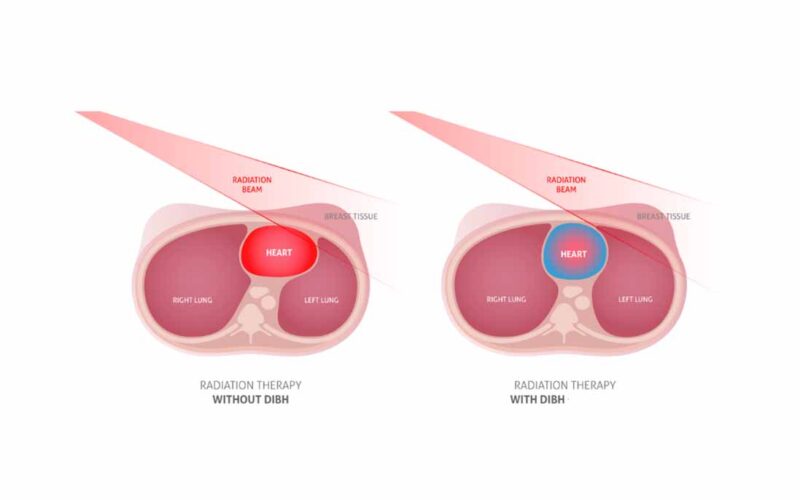Breast cancer has overtaken cervical cancer to become the most common cancer affecting Indian women
Breast cancer continues to be the most common type of cancer in women, accounting for 14% of cancers in Indian women. It is reported that with every four minutes, an Indian woman is diagnosed with breast cancer. Unfortunately, current trends indicate that a higher proportion of the disease is occurring at a younger age in Indian women, as compared to the West.
Management of breast Cancer is multidisciplinary and has come a long way, evolving from total mastectomy to present day implementation of breast conservation therapy. Breast conservative surgery has now become standard of care as it provides better survival rate and quality of life, compared to patients undergoing mastectomies. Another area where technology has helped the efficiency of treatment in breast cancer is, Radiation treatment. Radiation therapy has been shown to improve local control and overall survival in patients undergoing breast conservation therapy but yet with long-term follow-up, however, there has been an increase in incidences of cardiac events among irradiated patients. Reducing exposure to heart and lungs thereby helps decreasing the side effects and improves the quality of life. Improvements and advances in radiation technology and delivery methods over last few decades have led to dramatic improvement in treatment delivery with accuracy and precision thus leading to decrease in heart doses for those receiving breast cancer radiation. Modern techniques such as intensity-modulated radiation therapy (IMRT) decrease the volume of heart that receives high doses, a larger volume may receive lower doses, due to low-dose spray associated with the technique deep inspiration breath hold (DIBH). DIBH is an important tool for cardiac sparing and has been reproducibly associated with a reduction of mean heart dose. This benefit is the greatest in those patients with left-sided disease and those receiving IMC irradiation. DIBH has also been shown to decrease dose to the lungs.
Dr. Vijay Palwe, Consultant – Radiation Oncology & Dr. Prakash Pandit, Consultant – Radiation Oncology, HCG Manavata Cancer Centre Nashik share insights on Deep Inspiratory Breath Hold (DIBH): Modern technique in Breast Cancer Radiotherapy. They say, “DIBH is a radiation therapy technique where you are asked to take in a deep breath and hold this breath for a defined time as per your tolerance. By taking a deep breath in, your lungs will be filled with air and your heart will move away from your chest wall. The technique is based upon the observation that during inspiration, the flattening of the diaphragm and expansion of the lungs pulls the heart away from the chest wall. During both simulation and treatment, the patient takes a deep breath and then holds it for a period of time during which radiation is administered. This allows for a decrease in radiation dose to the heart.
DIBH planning is done with ABC (Active Breath Control) technology. ABC is a non-invasive advanced technology that can help you temporarily hold your breath in a consistent way while you are receiving radiation. The ABC device consists of a snorkel, a nose clip, a green button and a computer. For DIBH treatment, patients are trained to breathe through snorkel instead of nose. Clips are place on nose to avoid breathing through nose to avoid errors. Patient are also trained to hold breath for 20-25 seconds at particular volume. They are explained about the ABC device, press control while taking deep breath. As you are doing this the therapist will set your personal setting on a computer to mark how deeply you can breathe and how long you can hold your breath. After this you will be asked to take a deep breath. You will press the green button on the handle and hold it. Pressing the button will tell the therapist you are ready for breath hold. Once your breathing reaches the threshold established on the computer the ABC device will then be activated. Once patient becomes comfortable and confident doing DIBH, Free breathing phase and DIBH phase CT planning scans are acquired during simulation for planning purpose. Patients are also advised to practice DIBH at home to increase the comfort and confidence of the patient during actual treatment delivery.
DIBH is well tolerated and accepted by most patients. Patients are screened and carefully selected as per ability to tolerate the technique, potential benefit based on size, location, and type of tumour.
- Patients with left-sided breast cancers benefit most from the DIBH technique due to increased distance between chest wall and heart.
- Patients with right-sided breast cancers may also benefit from DIBH, largely due to decrease in ipsilateral and total lung doses associated with use of DIBH in patients.
- Patients with right-sided breast cancer with IMC and concern for lung dose, as well as patients undergoing IMC irradiation of either sides should also be considered for DIBH.
Various studies have clearly proved that DIBH treatment delivery is associated with significant improvements in both mean heart doses and mean LAD doses, with respective decreases of 25–67 and 20–73% when comparing the same patients planned with free breathing. In DIBH position there is significant increase in the lung volume and as a result the proportion of lung volume receiving the radiation is effectively reduced.

